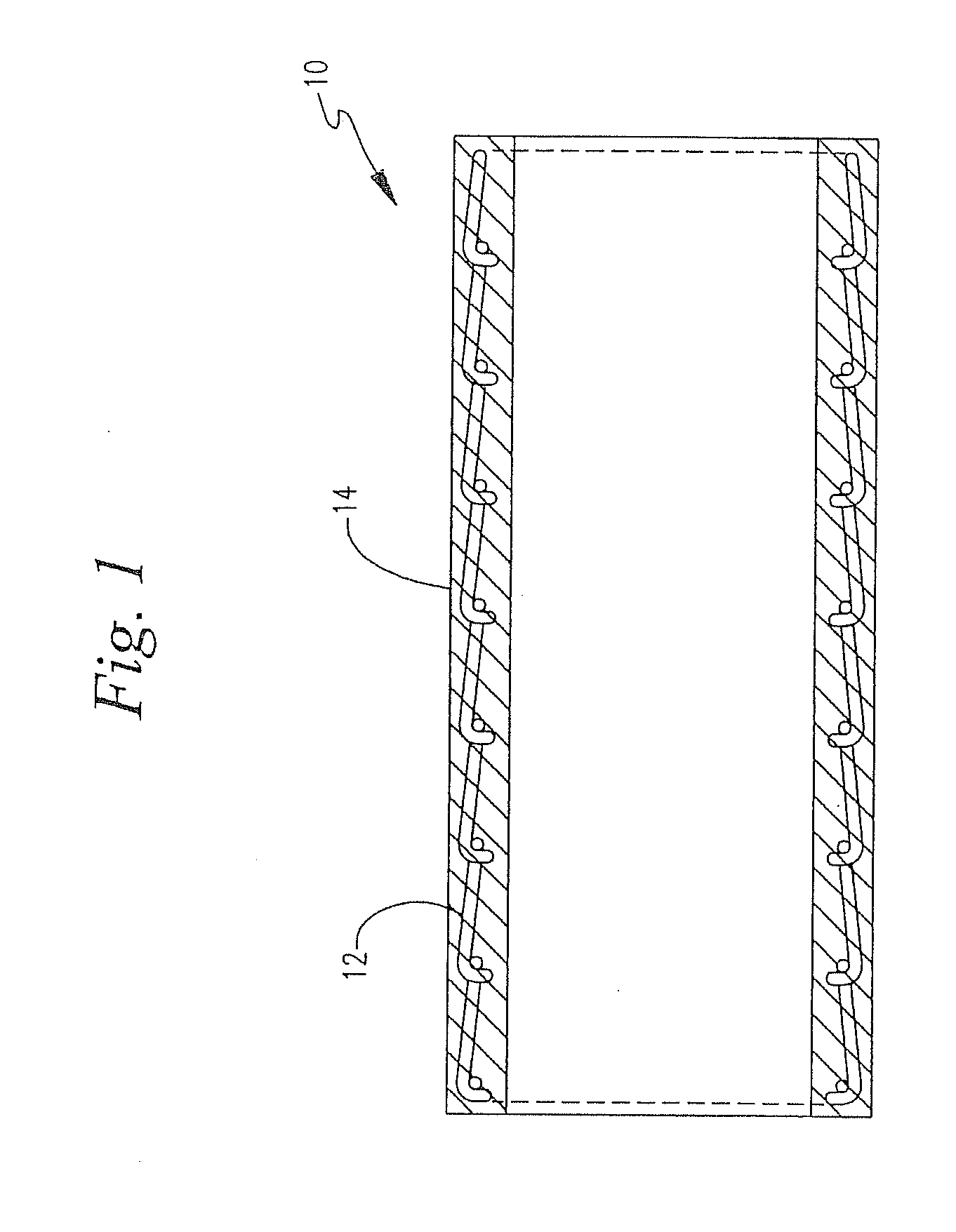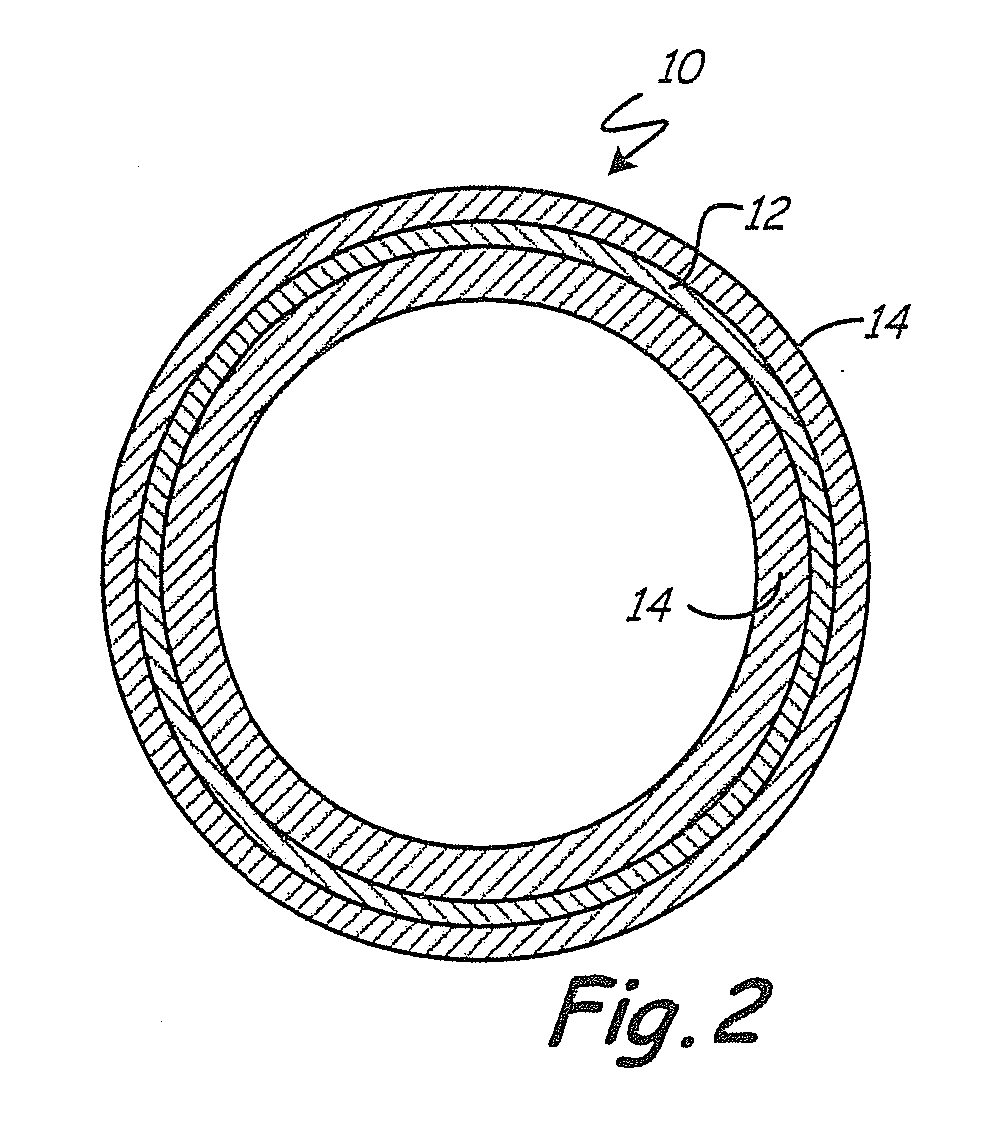Heparin coatings
a technology of heparin and coating, applied in the field of body treatment compositions, can solve the problems of affecting so as to improve the quality of blood vessels, and improve the effect of materials
- Summary
- Abstract
- Description
- Claims
- Application Information
AI Technical Summary
Benefits of technology
Problems solved by technology
Method used
Image
Examples
example 1
Heparin Complex
[0143]5 g sodium heparin (Celsus Laboratories, Inc, USP lyophilized from porcine intestinal mucosa) was dissolved in 80 ml de-ionized water and allowed to stir for 1 hour in a 250 ml beaker.
[0144]8 g benzalkonium chloride (Aldrich Chemical Company, Inc) was allowed to dissolve in 80 ml de-ionized water with gentle warming (40-50° C.) on a magnetic stirrer hotplate for 1 hour and then allowed to reach room temperature.
[0145]To the above vigorously stirred solution of sodium heparin, the benzalkonium chloride solution was added. A white precipitate immediately formed and the suspension was further stirred for 1 minute. The precipitate was filtered through a Whatman qualitative filter paper (grade 1).
[0146]The white precipitate was collected from the filter paper and re-suspended in 400 ml de-ionized water and allowed to stir for 20 minutes. The suspension was filtered as above and re-suspended in 400 ml de-ionized water and filtered again. The precipitate was once again...
example 2
[0149]3 g 4,4′-methylenebis(phenyl isocyanate) (MDI) (Aldrich Chemical Company, Inc) was dissolved in 100 ml anhydrous tetrahydrofuran (THF). Polyurethane tubing was dipped in to the above solution for 30 seconds and was then allowed to stir-dry at 60° C. for 1 hour.
[0150]5 g of dry crystals of complexed heparin from Example 1 were dissolved in 100 ml anhydrous dichloromethane (DCM). The MDI coated polyurethane tubing was dipped into the DCM solution of complexed heparin for 30 seconds and then allowed to air-dry for 2 hours.
[0151]The tubing was dyed with 0.075% w / v pH 8.5 toludine blue aqueous solution for 30 seconds and washed with de-ionized water. A very faint purple color due to the complexed heparin was observed. The tubing was then immersed in 25% w / v solution of sodium chloride at 40° C. for 30 minutes. The tubing was washed with de-ionized water and again dyed. An intense dark purple color due to complexed heparin was observed.
[0152]In a similar experiment where the polyure...
example 3
[0153]1. Heparin Methacrylate (methacryloyl chloride)
[0154]5 g of dry crystals of complexed heparin from Example 1 were dissolved in 100 ml anhydrous DCM in a 250 ml quickfit conical flask. To this was added 0.1265 g (1.25×10−3 moles) triethylamine.
[0155]Methacryloyl chloride (Aldrich Chemical Company, Inc) was distilled under reduced pressure to obtain a very pure sample. 0.1306 g (1.25×10−3 moles) of the above distilled methacryloyl chloride was dissolved in 30 ml anhydrous DCM and placed in a stoppered quickfit pressure equalizing funnel above the vigorously stirred solution of DCM containing the complexed heparin. The methacryloyl chloride solution was added drop-wise over a period of 30 minutes to the complexed heparin solution in DCM.
[0156]The DCM was rotary evaporated and the complexed heparin methacrylate was dried in a vacuum oven at 40° C. for 2 hours.
[0157]Complexed methacrylate was characterized by 1H and 13C.
[0158]0.2 g of the above complexed heparin methacrylate was di...
PUM
| Property | Measurement | Unit |
|---|---|---|
| diameter | aaaaa | aaaaa |
| temperature | aaaaa | aaaaa |
| boiling point | aaaaa | aaaaa |
Abstract
Description
Claims
Application Information
 Login to View More
Login to View More - R&D
- Intellectual Property
- Life Sciences
- Materials
- Tech Scout
- Unparalleled Data Quality
- Higher Quality Content
- 60% Fewer Hallucinations
Browse by: Latest US Patents, China's latest patents, Technical Efficacy Thesaurus, Application Domain, Technology Topic, Popular Technical Reports.
© 2025 PatSnap. All rights reserved.Legal|Privacy policy|Modern Slavery Act Transparency Statement|Sitemap|About US| Contact US: help@patsnap.com



